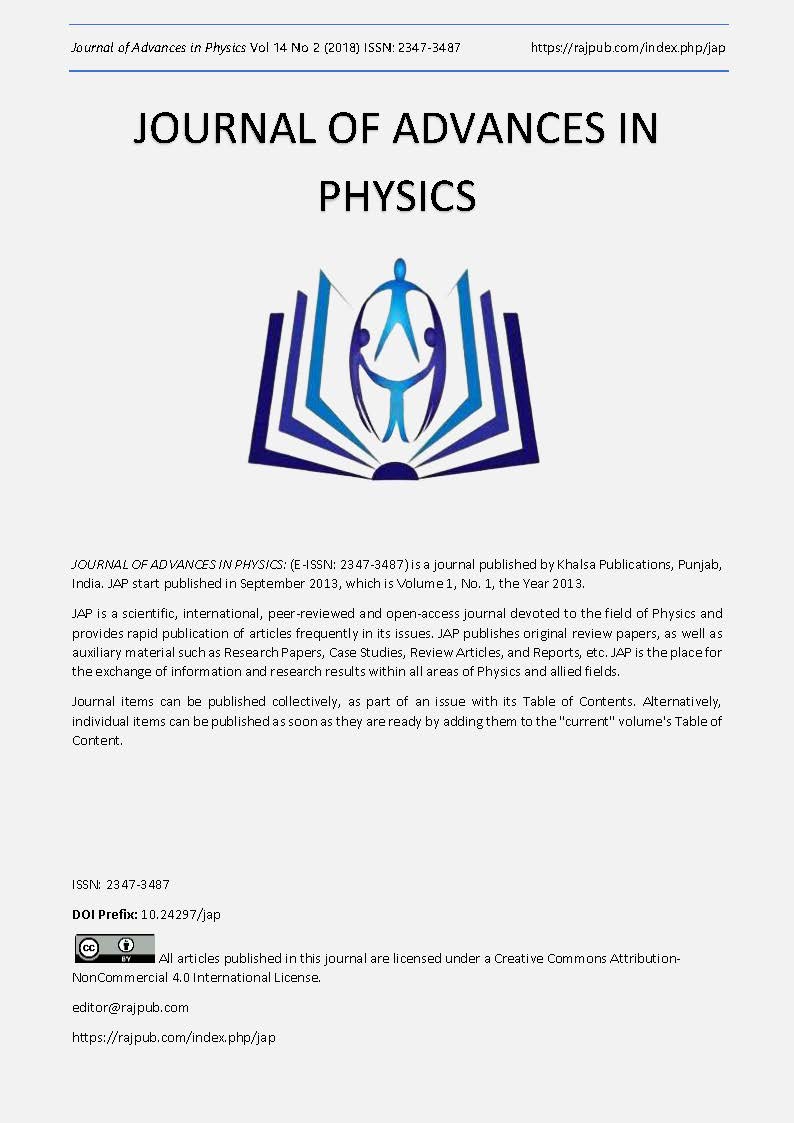The Quantum World Is Astonishingly Similar to Our World: The Timing of Wave Function Collapse According to The Theory of Elementary Waves
DOI:
https://doi.org/10.24297/jap.v14i2.7555Keywords:
Foundations of quantum mechanics, probability amplitudes, Theory of Elementary WavesAbstract
This is one of a series of articles building a map of elementary waves, based on experimental data and quantum mathematics. Previous articles showed that elementary waves carry no energy. Particles follow them backwards. Why? Elementary rays consist of probability amplitudes, which influence particles because that is what probability amplitudes do. Elementary waves are that part of nature corresponding to quantum mathematics. Since these waves are the physical analogs of quantum equations, those equations provide a roadmap to the world of elementary waves: a map written in hieroglyphs. Quantum math is our Rosetta stone. The quantum world is far, far more similar to the world of everyday experience than quantum experts think. Waves are in a superposition. Particles are not. Wave function collapse does not occur when we measure something. It had occurred much earlier, when the object came into existence. This resolves insoluble problems that stumped John von Neumann. The smooth functioning of a Schrödinger equation abruptly collapses into one specific eigenstate when a gun is fired, not when the bullet hits the target. The bullet that caused World War I is an example. That bullet caused an abrupt collapse of the smooth probabilities of commerce and diplomacy.
Downloads
References
Juffermann, J., A. Milic, M. Müllneritsch, et. al., “Real-time single-molecule imaging of quantum interference,” Nature Nanotechnology, 7, 297- 300, 2012. https://www.nature.com/articles/nnano.2012.34. (accessed July 28, 2018).
Nairz, O., M. Arndt, and A. Zeilinger, "Quantum interference experiments with large molecules," American Journal of Physics, Vol. 71, 319-325 (April 2003), URL = http://ajp.aapt.org/resource/1/ajpias/v71/i4/p319_s1?isAuthorized=no (accessed January 27, 2011).
L. E. Little, Theory of Elementary Waves, Physics Essays 9 (1), 100-134 (1996).
L.E. Little, "Theory of Elementary Waves," lecture at the Jet Propulsion Labs in 2000, URL=http://tewlip.com/viewtopic.php?f=8&t=18 (accessdate=April 19, 2018).
L. E. Little, Theory of Elementary Waves, (New Classics Library, New York, 2009).
J. H. Boyd, "Rethinking a Wheeler delayed choice gedanken experiment," Physics Essays 25, (3) pp. 390-396, 2012. (http://dx.doi.org/10.4006/0836-1398-25.3.390).
J. H. Boyd, "Re-thinking a delayed choice quantum eraser experiment: a simple baseball model," Physics Essays, March 2013, Vol. 26, No. 1, pp. 100-109, (doi: 10.4006/0836-1398-26.1.100).
J. H. Boyd, "Re-thinking Alain Aspect's 1982 Bell test experiment with delayed choice," Physics Essays, 26 (4) 582-591 (2013). http://physicsessays.org/browse-journal-2/product/39-15-jeffrey-h-boyd-rethinking-alain-aspect-s-1982-bell-test-experiment-with-delayed-choice.html
J. H. Boyd, “Paul Dirac’s view of the Theory of Elementary Waves,” Journal of Advances in Physics 13, 13 (3), (March 2017). DOI: https://doi.org/10.24297/jap.v13i3.5921
J. H. Boyd, “A paradigm shift in mathematical physics, Part 4: Quantum computers and the local realism of all 4 Bell states," Journal of Advances in Mathematics, 11 (4), 5476-5493 (November, 2015). http://cirworld.org/journals/index.php/jam/article/view/5502
J. H. Boyd, “A paradigm shift in mathematical physics, Part 3: A mirror image of Feynman’s quantum electrodynamics (QED)," Journal of Advances in Mathematics, 11 (2), 3977-3991 (August, 2015). http://cirworld.com/journals/index.php/jam/article/view/4963
J. H. Boyd, “A paradigm shift in mathematical physics, Part 2: A new local realism explains Bell test & other experiments,” Journal of Advances in Mathematics, 10 (9), 3828-3839 (July 2015). http://cirworld.com/journals/index.php/jam/article/view/4806
J. H. Boyd, “A paradigm shift in mathematical physics, Part 1: The Theory of Elementary Waves (TEW),” Journal of Advances in Mathematics 10 (9), 3828-3839 (June 2015). http://cirworld.com/journals/index.php/jam/article/view/4719
J. H. Boyd, “The Theory of Elementary Waves eliminates Wave Particle Duality,” Journal of Advances in Physics 7 (3), 1916-1922 (Feb 2015). http://cirworld.org/journals/index.php/jap/article/view/228n
J. H. Boyd, “A new variety of local realism explains a Bell test experiment: the Theory of Elementary Waves (TEW) with no hidden variables,” Journal of Advances in Physics 8 (1), 2051-58 (Mar 2015). http://cirworld.org/journals/index.php/jap/article/view/252na
J. H. Boyd, “A proposed physical analog of a quantum amplitude: Corkscrew model from the Theory of Elementary Waves (TEW)” Journal of Advances in Physics 10, (3), 2774-2783 (Oct 2015). http://cirworld.org/journals/index.php/jap/article/view/5116
J. H. Boyd, “A symmetry hidden at the center of quantum mathematics causes a disconnect between quantum math and quantum mechanics,” Journal of Advances in Mathematics, 13 (4), 7379-86 (November 2017). DOI: 10.24297/jam.v13i4.6413
J. H. Boyd, “The Boyd Conjecture,” Journal of Advances in Physics 13 (4), 4830-37 (April 2017). https://doi.org/10.24297/jap.v13i4.6038
von Neumann, J., Mathematical Foundations of Quantum Mechanics, translated by Robert T. Beyer, (Princeton NJ: Princeton University Press, c1955).
R. P. Feynman, R. B. Leighton and M. Sands, The Feynman Lectures on Physics: vol. 3, Quantum Mechanics, Basic Books, 2010. See volume 3, pages 310f.
A. Becker, What is real?, Basic Books, 2018.
Selleri, F., “Recovering the Lorentz ether,” Apeiron 11, 246 (2004).
Selleri, F., “Noninvariant one-way velocity of light,” Foundations of Physics 26, 641-664 (1996).
Selleri, F., “Our absolute velocity,” in Physical Interpret. of Relativity Theory, (C. Duffy editor), British Soc. Philosophy of Science, London 2002.
Freire, Olival, Interview with Dr. Franco Selleri, American Institute of Physics: Oral History Interviews. Accessed 3/21/2017 from: https://www.aip.org/history-programs/niels-bohr-library/oral-histories/28003-1
Selleri, F. Weak Relativity: the physics of space and time without paradoxes. C.Roy Keys Inc, 2009
Selleri, F. Lezioni di Relativita, (in Italian), Libro Universitario, 2003 (ISBN 88-88550-12-7)
Downloads
Published
How to Cite
Issue
Section
License
 All articles published in Journal of Advances in Linguistics are licensed under a Creative Commons Attribution 4.0 International License.
All articles published in Journal of Advances in Linguistics are licensed under a Creative Commons Attribution 4.0 International License.




